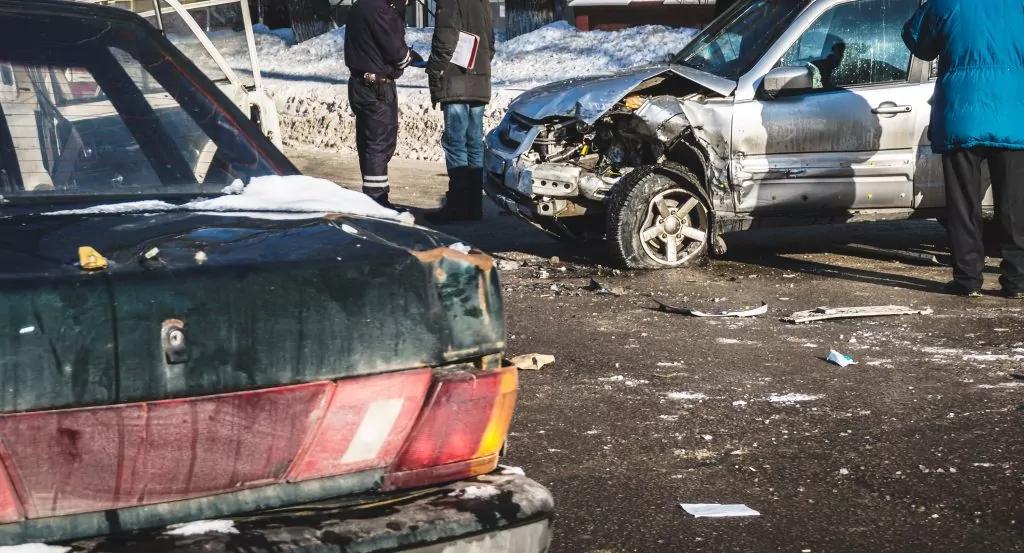Home » Fault In 3 Way Car Accidents In California
Fault In 3 Way Car Accidents In California
Sometimes, car accidents involve multiple cars as a result of a “chain reaction”. In accidents like these…who is at fault?

A “chain reaction” traffic accident or in other words, a multiple car collision occurs when three or more vehicles hit one another in a series of fender-benders in California. In most cases, the accidents are caused by the first car that collided pushing the vehicles with an immense force onto the car in front of them. Negligence of car maintenance, weather, and bad road conditions are sometimes a playing factor with these accidents.
If you have been injured or a victim of a chain-reaction car accident in CA. Contact a trusted car accident lawyer at Krasney Law today. We offer free consultations and can help get the answers you need.
Chain Reaction Car Accident Example
Here’s an example of typical chain-reaction car accidents to make it easier for you to visualize and understand how it happens:
Driver D initially hits Driver C with enough force that causes them to slide into Driver B then hitting Driver A at the end. If any of the drivers are following to closely it could continue the chain reaction. In other situations, any of the drivers that are a victim to distracted driving and are using their phones are subject to liability for chain-reaction car accidents. As one car hits the next, if there is enough force the chain reaction can continue without a specific course, that is why it is important to follow speed limit signs to reduce the time it takes to bring your vehicle to a complete stop.
Because chain reaction accidents may involve many different drivers who were each acting carelessly, driving distracted, or possibly under the influence (at least to some degree), using a car accident lawyers or getting the car insurance involved can prove to be difficult for these types of accidents.
There are many different issues that can occur. Let’s look at some of the different issues that may arise — especially when it comes to establishing liability and negligence in car accident cases involving chain reaction or multiple car accidents in California.
How To Establishing Who Was at Fault In California
In the state of California, if you file an insurance claim or lawsuit against another motorist after a chain-reaction car accident, you’ll need to prove liability under a legal theory called “negligence.” Figuring out which driver was negligent is mostly a matter of determining which driver’s carelessness caused the accident. If more than one driver is at fault then we would have to prove the negligence of multiple drivers. This is why it is important to speak to a lawyer after an accident to make sure you are getting the compensation and defense you deserve.
At minimum drivers must leave a sufficient amount of space between the car so that it allows them to stop in time in case of any sudden traffic changes, Drivers who choose to tailgate are acting not allowing themselves this space which is, in turn, a form of negligence. In the state of California, driver’s are taught to leave space and follow the speed limit.
Not every situation is pure negligence. What if your car is pushed into another car a=out of pure speed and force due to someone behind you?
Let’s revisit the example we discussed above.
Who’s At Fault If Your Car Got Pushed From Force Of Impact?
In this scenario, Motorist A will need to establish the sequence of events that led to Motorist B’s rear-ending Motorist A.
Did Motorist C collide with Motorist B resulting with Motorist B rear-ending Motorist A? If this was the case, then Driver C would be at fault for driving carelessly and not leaving enough distance to stop in time. If that’s the case, Driver C would likely be at fault for the car accident, and would be on the hook to both Driver A and Driver B for damages stemming from this accident (in reality, Driver C’s car insurance carrier would be financially responsible, up to policy limits).
There are a number of sources that can help you establish the order of impacts of a chain-reaction car accident, and who was negligent. These sources include:
- Eyewitness accounts
- Police reports
- Vehicle damage
- Evidence gathered at the scene of the accident, including skid marks and vehicle debris.
Getting Help From Krasney Law. Trusted Car Accident Lawyers
Sometimes after an accident, it makes no sense to handle things on your own. The injuries, the bills, and life changes are already stressful enough. Especially when someone is trying to blame you for an accident that clearly had nothing to do with your negligence. To make sure your case is in capable hands, and that your right to fair compensation is protected, it may be time to discuss your situation with an experienced car accident attorney.



